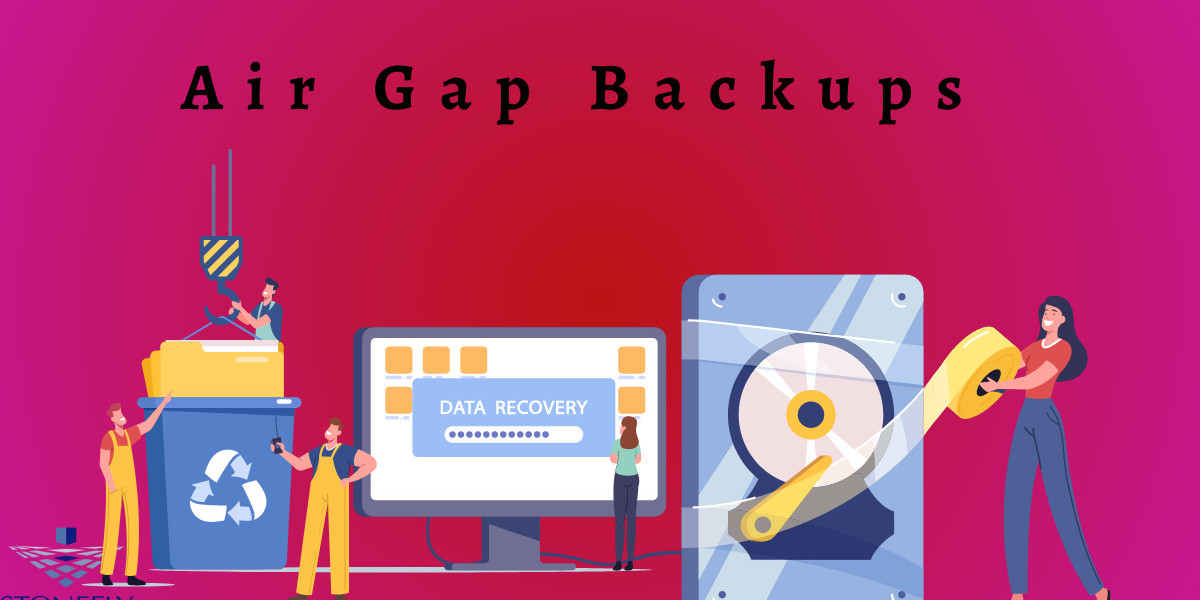Air Gap Backups: A Secure Solution for Data Protection
In today's data-driven world, ensuring the security and integrity of critical information is of utmost importance. Cyber threats, such as ransomware attacks and data breaches, continue to evolve and pose significant risks to businesses and individuals alike. To safeguard against these threats, organizations need robust data protection strategies. One such solution gaining prominence is "Air Gap Backups."
What are Air Gap Backups?
Air gap backups refer to a data protection method where critical information is isolated from the network and stored in a separate, offline environment. The concept of the air gap is derived from the physical isolation that exists between the backed-up data and the connected network, leaving no direct path for cyber threats to compromise the data.
How Air Gap Backups Work
To implement air gap backups, organizations create a clear separation between the primary network and the backup storage. This involves the use of offline storage devices, cloud-based repositories with no direct network link, or a combination of both. The backup process regularly duplicates essential data and moves it to the isolated environment, ensuring that even if the primary network is compromised, the data remains safe and accessible for recovery.
Advantages of Air Gap Backups
1 Enhanced Security
The primary advantage of air gap backups is the enhanced security it offers. By creating a physical barrier between the primary network and the backup data, organizations significantly reduce the risk of cyberattacks, especially those targeting online and network-connected assets.
2 Protection against Ransomware Attacks
Ransomware attacks have become a major concern for businesses worldwide. These malicious programs encrypt sensitive data and demand a ransom for decryption keys. With air gap backups, organizations can effectively neutralize ransomware threats, as the isolated backup data remains unaffected, providing a clean copy for recovery.
3 Prevention of Data Corruption
Data corruption can occur due to various reasons, including hardware failures and software glitches. Air gap backups mitigate this risk by maintaining a separate and pristine copy of the data, ensuring data integrity is preserved.
Implementing Air Gap Backups
1 Offline Storage Devices
One approach to implementing air gap backups is through the use of offline storage devices, such as external hard drives, tape drives, or removable storage media. These devices are disconnected from the network when not in use, preventing any direct access by cyber threats.
2 Cloud-Based Air Gap Backups
Cloud-based air gap backups involve using cloud storage services that do not have a direct link to the primary network. Organizations can synchronize data periodically with the cloud, and after the synchronization process, the network connection is severed, ensuring the data remains isolated.
3 Hybrid Approaches
Some organizations adopt hybrid approaches, combining offline storage Devices and cloud-based solutions to create an extra layer of redundancy and flexibility in their data backup strategy.
Choosing the Right Air Gap Backup Strategy
When implementing air gap backups, several factors come into play:
1 Assessing Data Sensitivity
Organizations must assess the sensitivity of their data to determine which information requires air gap protection and what can be backed up through traditional means.
2 Evaluating Recovery Time Objectives (RTOs) and Recovery Point Objectives (RPOs)
Understanding the acceptable downtime and data loss window is crucial in designing an effective air gap backup strategy.
3 Cost Considerations
While air gap backups offer unparalleled security, they can be more expensive to implement and maintain. Balancing security needs with budget constraints is essential.
Air Gap Backups and Compliance
1 GDPR Compliance
The General Data Protection Regulation (GDPR) mandates stringent data protection measures. Air gap backups can aid organizations in complying with GDPR requirements by providing an additional layer of security.
2 HIPAA Compliance
Health Insurance Portability and Accountability Act (HIPAA) regulations demand robust data protection in the healthcare sector. Air gap backups offer a viable solution to ensure patient data remains confidential.
3 PCI DSS Compliance
For organizations handling credit card information, adhering to the Payment Card Industry Data Security Standard (PCI DSS) is essential. Air gap backups can help protect sensitive payment data from unauthorized access.
Best Practices for Air Gap Backup Security
1 Regular Testing and Monitoring
Periodically testing and monitoring air gap backup systems is critical to identify vulnerabilities and ensure data recoverability.
2 Encryption and Authentication
Implementing strong encryption and authentication mechanisms adds an extra layer of protection to the backup data.
3 Access Control and Privileges
Strict access controls and privilege management prevent unauthorized access to the backup environment.
Challenges and Limitations of Air Gap Backups
1 Operational Complexity
Managing air gap backup systems can be more complex than traditional backups, requiring specialized knowledge and expertise.
2 Data Synchronization
Maintaining synchronization between the primary network and the air-gapped environment can be challenging, particularly for organizations with large datasets.
3 Physical Security Risks
Air gap backups stored on offline devices face physical risks, such as theft or damage, which need to be addressed.
The Future of Data Protection: Is Air Gap Still Relevant?
With the evolving threat landscape, the relevance of air gap backups remains strong. Although new technologies and approaches emerge, the air gap concept remains a potent solution to safeguard critical data from cyber threats.
Conclusion
Air gap backups offer a formidable defense against cyber threats and data loss. By creating a physical separation between the primary network and the backup data, organizations can ensure the integrity, confidentiality, and availability of their critical information. While air gap backups come with challenges, their advantages far outweigh the complexities, making them a crucial component of a comprehensive data protection strategy.
FAQs
Are air gap backups suitable for small businesses?
Yes, air gap backups can benefit businesses of all sizes, including small enterprises. The level of implementation may vary based on data sensitivity and budget constraints.
Can cloud-based air gap backups be hacked?
Cloud-based air gap backups are highly secure as they don't have a direct network link. However, adopting robust encryption and authentication measures is essential to further enhance their security.
How often should air gap backups be tested?
Regular testing is crucial to ensure the effectiveness of air gap backups. Quarterly or semi-annual tests are generally recommended, but the frequency may vary based on organizational needs.
Is it necessary to use both offline storage devices and cloud-based solutions?
No, the choice between offline storage devices and cloud-based solutions depends on the specific requirements and preferences of the organization. Both approaches offer effective air gap protection.
Can air gap backups prevent data corruption caused by hardware failures?
Yes, air gap backups can help prevent data corruption caused by hardware failures. Since the backup data is stored in a separate environment, hardware issues in the primary network do not affect the isolated data.



